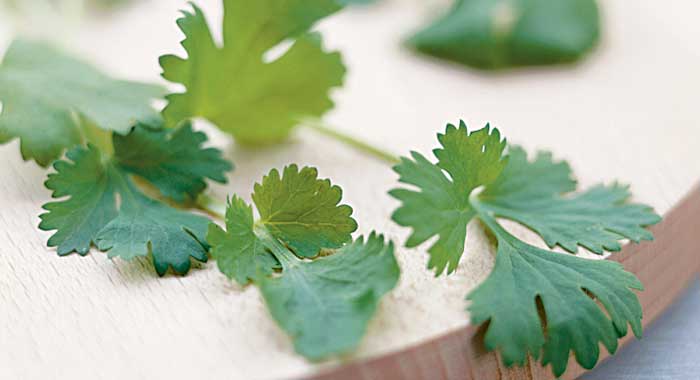
Pronounce it: par-slee
One of the most ubiquitous herbs in British cookery, parsley is also popular in European and Middle Eastern food. The traditional British choice is curly parsley, but flat leaved (Continental) parsley is also widely available. The flavour is fresh and grassy, and works well with most other ingredients.
Choose the best
Go for fresh looking, bright green bunches, with no wilting or discolouration. Curly parsley is darker than the flat leaf variety, and has a milder taste. Flat leaf has a more robust (and, some say, better) flavour. They can be used interchangeably, but the fact that flat leaf is much easier to clean (the curly type can trap lots of dirt in its frilly leaves) swings it for some people. Dried parsley is also available but its flavour doesn’t match up to the real thing.
Prepare it
Wash, then chop the leaves either finely (for adding subtle flavour to cooked dishes) or coarsely, for dishes such as salads, for which you want more of a flavour impact. The stalks have a lot of flavour, too, so can be chopped finely and added as well- or use them for making stock.
Store it
Fresh cut parsley should be wrapped in damp kitchen paper, placed in a perforated bag and stored in the fridge. It will last for up to 3 days.
Alternatively, treat like a bunch of flowers and put in a glass of water in the fridge, covering the leaves with a plastic bag and changing the water every two days – it can last for up to a week this way. Dried parsley should be stored in an airtight container in a cool, dark place. It will keep its potency for up to 4 months.
Cook it
In Middle Eastern salads; with basil, to make pesto; add to soups, stews, sauces, meatballs, fishcakes, burgers, salsas and marinades.
Alternatives
Try dill or chervil.
Be the first to comment on "Parsley"